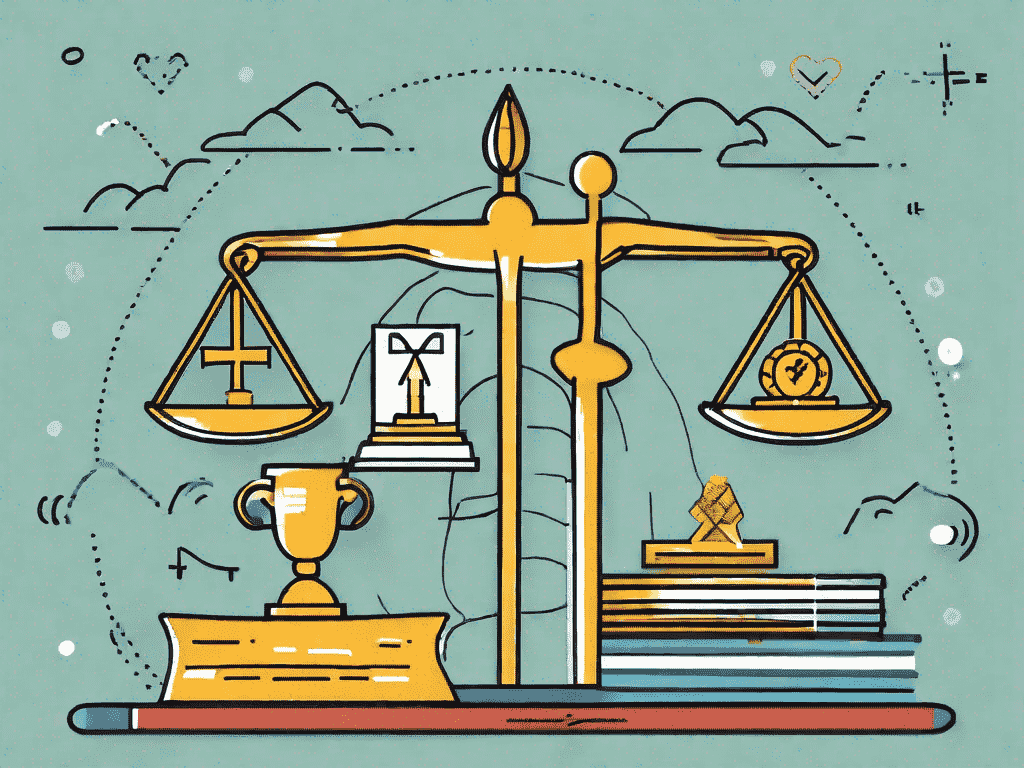
How to Maximize Compensation and Benefits for Employee Retention
Employee retention is a critical aspect of every organization’s success. Retaining talented employees not only reduces recruitment costs but also fosters a stable and productive work environment. One key factor that plays a significant role in employee retention is compensation and benefits. Offering competitive compensation packages and attractive benefits can help organizations attract and retain top talent. In this article, we will explore the importance of compensation and benefits, strategies to enhance them, and the role of non-cash rewards and benefits, as well as how to effectively communicate these offerings to employees.
Understanding the Importance of Compensation and Benefits
Compensation and benefits play a crucial role in attracting and retaining skilled employees. A comprehensive compensation package encompasses both monetary and non-monetary rewards that recognize employee skills, experience, and contributions. It is essential to understand the impact of compensation and benefits on employee retention to develop effective retention strategies.
When it comes to compensation, competitive salaries are a fundamental aspect of every compensation package. Employees need to feel that their efforts are adequately rewarded and that they are being paid fairly compared to their peers in the industry. Organizations need to regularly review and adjust their salary structures to ensure they remain competitive.
However, compensation is not the only factor that influences employee retention. The impact of benefits on employee satisfaction should not be underestimated. In addition to competitive salaries, benefits such as healthcare packages, retirement plans, and professional development opportunities contribute to employee satisfaction.
Healthcare packages, for instance, provide employees with the peace of mind that their medical needs will be taken care of. This not only ensures their physical well-being but also shows that their organization cares about their overall health and well-being. It creates a sense of security and loyalty, making employees more likely to stay with the company in the long run.
Retirement plans are another crucial benefit that can significantly impact employee satisfaction and retention. Knowing that they have a solid retirement plan in place gives employees a sense of financial security and stability. It allows them to envision a future where they can enjoy their retirement years without worrying about their financial well-being. This long-term perspective can be a powerful motivator for employees to stay with an organization.
Professional development opportunities are also highly valued by employees. They provide individuals with the chance to enhance their skills, acquire new knowledge, and advance in their careers. When organizations invest in their employees’ professional growth, it not only benefits the individuals but also the company as a whole. Employees feel valued and supported, which increases their job satisfaction and loyalty.
In conclusion, compensation and benefits are vital components of an effective employee retention strategy. Competitive salaries ensure that employees feel adequately rewarded for their efforts, while benefits such as healthcare packages, retirement plans, and professional development opportunities contribute to their overall satisfaction and well-being. By understanding the importance of compensation and benefits, organizations can attract and retain skilled employees who are committed to the success of the company.
Strategies to Enhance Compensation Packages
Organizations can implement various strategies to enhance compensation packages and attract top talent. In today’s competitive job market, it is crucial for companies to offer attractive compensation packages that go beyond just a basic salary.
One strategy that organizations can adopt is implementing competitive salary structures. This involves conducting market research to determine industry benchmarks and aligning salaries accordingly. By offering salaries that are in line with or above industry standards, companies can ensure that employees are paid competitively. This not only helps in attracting top talent but also in retaining existing employees. Regular salary reviews and adjustments based on performance are also essential to maintain employee motivation and satisfaction. When employees see that their efforts are recognized and rewarded through salary increments, it boosts their morale and encourages them to perform even better.
Another strategy to enhance compensation packages is offering performance-based bonuses as part of an annual incentive plan. These bonuses provide an additional incentive for employees to excel in their roles. By linking bonuses to individual and company performance metrics, organizations can motivate employees to achieve their targets and contribute to organizational success. Performance-based bonuses can be tied to various factors such as meeting sales targets, achieving key performance indicators, or completing projects within deadlines. This not only encourages employees to strive for excellence but also fosters a culture of healthy competition within the organization.
In addition to competitive salaries and performance-based bonuses, organizations can also consider offering other forms of compensation to enhance their packages. This can include benefits such as health insurance, retirement plans, flexible work arrangements, and professional development opportunities. By providing a comprehensive compensation package, companies can demonstrate their commitment to the well-being and growth of their employees.
Furthermore, organizations can also explore non-monetary rewards to enhance compensation packages. Recognizing and appreciating employees’ efforts through awards, certificates, or public acknowledgments can go a long way in boosting employee morale and job satisfaction. Additionally, offering opportunities for career advancement, mentoring programs, and skill-building workshops can also be attractive incentives for employees.
In conclusion, enhancing compensation packages is crucial for organizations to attract and retain top talent. By implementing strategies such as competitive salary structures, performance-based bonuses, and additional benefits, companies can create an appealing package that not only attracts potential employees but also motivates and engages existing ones. It is important for organizations to regularly review and update their compensation strategies to stay competitive in the ever-evolving job market.
Optimizing Employee Benefits
In addition to competitive salaries, organizations should consider offering comprehensive benefits to attract and retain employees.
Employee benefits play a crucial role in attracting and retaining top talent. In today’s competitive job market, candidates often evaluate the overall compensation package, including benefits, before accepting a job offer. Therefore, organizations must prioritize offering comprehensive benefits that address the diverse needs of their workforce.
Providing Comprehensive Health Care Packages
Employees value organizations that prioritize their health and well-being. By offering comprehensive health care packages, including medical, dental, and vision coverage, organizations can demonstrate their commitment to employee welfare.
Comprehensive health care packages go beyond basic medical coverage. They provide employees with access to a wide range of healthcare services, including preventive care, specialist consultations, and alternative therapies. By offering such comprehensive coverage, organizations not only promote the physical well-being of their employees but also contribute to their overall happiness and job satisfaction.
Furthermore, organizations can partner with wellness programs and fitness centers to encourage employees to adopt healthy lifestyles. By providing access to gym memberships, nutrition counseling, and stress management workshops, organizations can empower employees to take charge of their well-being.
Establishing Retirement Plans and Pension Schemes
Retirement plans and pension schemes provide long-term financial security and peace of mind for employees. Organizations can enhance employee retention by offering attractive retirement gifts and benefits and facilitating financial planning for employees’ future.
Retirement plans come in various forms, such as 401(k) plans, pension schemes, and employee stock ownership plans (ESOPs). These plans allow employees to save for their retirement while benefiting from employer contributions and tax advantages. By offering such retirement benefits, organizations not only help employees secure their financial future but also demonstrate their commitment to long-term employee well-being.
Additionally, organizations can provide financial education and retirement planning resources to empower employees to make informed decisions about their financial goals. By offering workshops, seminars, and access to financial advisors, organizations can support employees in creating personalized retirement plans tailored to their unique needs.
Moreover, organizations can explore innovative retirement benefits, such as phased retirement programs, where employees can gradually transition into retirement while still contributing their expertise to the organization. Such programs not only benefit employees by providing flexibility but also allow organizations to retain valuable knowledge and experience.
The Role of Non-Monetary Benefits
While monetary rewards are essential, non-monetary benefits can also significantly influence employee retention. In addition to a competitive salary, organizations that prioritize the well-being and professional growth of their employees create a positive work environment that fosters loyalty and commitment.
The Value of Work-Life Balance Initiatives
Organizations that prioritize work-life balance initiatives understand the importance of allowing employees to maintain a healthy equilibrium between their personal and professional lives. By offering flexible work hours, remote work options, and paid time off, these organizations demonstrate their commitment to supporting their employees’ well-being.
Flexible work hours enable employees to manage their time effectively, allowing them to fulfill personal obligations without compromising their work responsibilities. This flexibility can be especially beneficial for parents, caregivers, and individuals pursuing further education or personal development.
Remote work options have become increasingly popular in recent years, and for a good reason. By allowing employees to work from home or other locations, organizations provide them with the freedom to create a work environment that suits their individual needs. This flexibility can lead to increased productivity, reduced commuting time, and improved work-life balance.
In addition to flexible work hours and remote work options, paid time off is another crucial aspect of work-life balance initiatives. By providing employees with paid vacation days, sick leave, and personal days, organizations acknowledge the importance of rest and rejuvenation. This recognition contributes to a healthier and more motivated workforce.
The Impact of Professional Development Opportunities
Providing employees with opportunities for learning and growth is not only beneficial for their individual development but also for the overall success of the organization. When employees feel supported in their professional journey, they are more likely to stay engaged, motivated, and loyal.
Training programs are an effective way to enhance employees’ skills and knowledge. By offering workshops, seminars, and courses, organizations invest in their employees’ continuous learning and development. These programs can cover a wide range of topics, including technical skills, leadership development, and personal growth.
Mentorship opportunities are another valuable resource for employees seeking guidance and support. Pairing experienced professionals with less experienced individuals allows for knowledge transfer and fosters a sense of community within the organization. Mentors can provide advice, share their experiences, and help mentees navigate their career paths.
Career development resources, such as career counseling, performance evaluations, and advancement opportunities, play a crucial role in employee retention. When employees see a clear path for growth and advancement within the organization, they are more likely to stay committed and motivated to achieve their professional goals.
In conclusion, while monetary rewards are important, non-monetary benefits can significantly impact employee retention. By prioritizing work-life balance initiatives and providing professional development opportunities, organizations create an environment that values employees’ well-being and supports their growth. These efforts contribute to a more engaged, satisfied, and loyal workforce.
Communicating Compensation and Benefits to Employees
Effective communication is vital to ensure that employees understand and appreciate the compensation and benefits they receive.
Transparency in Compensation Policies
Organizations should establish clear policies and guidelines regarding compensation. Transparent communication about how salaries are determined, including performance-based pay structures, fosters trust and clarity among employees.
Educating Employees about Benefit Options
Employees may not be fully aware of all the benefits available to them. Organizations should regularly communicate the range of benefits offered and provide guidance on how employees can make the most of them. This can be done through employee handbooks, internal communication channels, and dedicated sessions to address questions and concerns.
In conclusion, maximizing compensation and benefits for employee retention is crucial for organizations looking to retain top talent. By understanding the importance of compensation and benefits, implementing strategies to enhance them, recognizing the value of non-monetary benefits, and effectively communicating these offerings to employees, organizations can create an attractive and supportive work environment that fosters employee loyalty and satisfaction.


